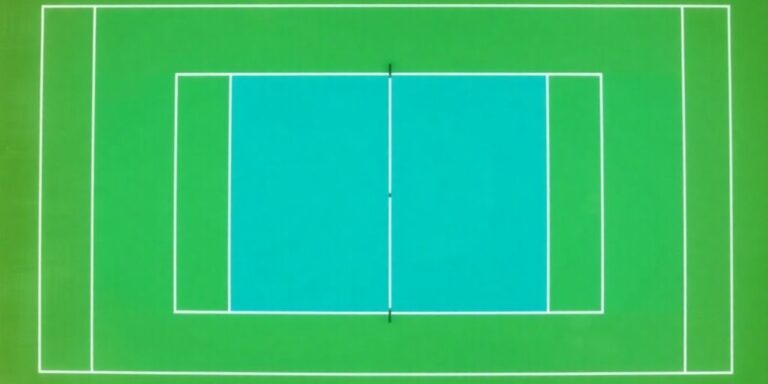Pickleball is a rapidly growing sport that combines elements of tennis, badminton, and table tennis. Understanding the rules and regulations is essential for enjoying the game and playing it correctly. This guide will provide a detailed overview of pickleball rules and regulations, ensuring you can confidently step onto the court and play by the book.
The Court
A pickleball court is similar in size to a doubles badminton court, measuring 20 feet wide and 44 feet long. Key areas of the court include:
- Baseline: The line at the back of the court.
- Sidelines: The lines running along the sides of the court.
- Non-Volley Zone (Kitchen): A 7-foot area on both sides of the net where players cannot volley the ball.
- Service Courts: The areas on either side of the centerline and the non-volley zone, divided into left and right service courts.
Equipment
- Paddles: Made from wood, composite, or graphite, paddles are smaller than tennis racquets.
- Balls: Perforated plastic balls similar to Wiffle balls, with different types for indoor and outdoor play.
- Net: The net is 36 inches high at the sidelines and 34 inches at the center.
Basic Rules
- Serve:
- Must be underhand.
- The paddle must contact the ball below the waist.
- Serve diagonally cross-court.
- Serve must clear the non-volley zone.
- Only one serve attempt is allowed, except in the case of a let (the ball touches the net but lands in the correct service court).
- Double Bounce Rule:
- After the serve, each team must let the ball bounce once before volleys are allowed. This means the receiving team must let the serve bounce, and the serving team must let the return bounce.
- Scoring:
- Only the serving team can score points.
- Games are typically played to 11 points, win by 2.
- In tournament play, games may be played to 15 or 21 points, win by 2.
- Faults:
- Hitting the ball out of bounds.
- Not clearing the net.
- Volleying the ball in the non-volley zone.
- Double bounce before a volley.
- Stepping into the non-volley zone and volleying the ball.
Serving Rules
- Position:
- Server stands behind the baseline on the right-hand side of the court.
- Serve diagonally to the opponent’s right-hand service court.
- Rotation:
- In doubles, the server continues to serve, alternating service courts, until a fault is made.
- The serve then goes to the opponents, and the first server will serve from the right-hand side.
- Second Server:
- In doubles, each team has two servers. After the first server faults, the second player on the team serves.
- After both players have served and committed a fault, the serve goes to the opposing team.
Non-Volley Zone (Kitchen)
- Purpose:
- Prevents players from executing smashes close to the net.
- Rules:
- Players cannot volley the ball while standing in the non-volley zone.
- Players may enter the non-volley zone to play a ball that has bounced.
- Players must exit the non-volley zone before volleying again.
Strategies and Tips
- Positioning:
- Stay just behind the non-volley zone line to be ready for volleys.
- In doubles, communicate and coordinate with your partner to cover the court efficiently.
- Shot Selection:
- Use a mix of dinks, drives, and lobs to keep opponents off balance.
- Aim for your opponents’ feet or weak side to make returns difficult.
- Serve and Return:
- Serve deep to push opponents back.
- Return the serve deep to give yourself time to get to the net.
Common Faults
- Foot Faults:
- Stepping on or over the baseline during a serve.
- Entering the non-volley zone to volley a ball.
- Double Hits:
- Hitting the ball twice on one side of the net.
- Wrong Service Court:
- Serving to the wrong side of the court.
- Receiving the serve from the wrong side.
Advanced Rules (Tournament Play)
- Line Calls:
- Players are responsible for calling the lines on their side of the court.
- Any ball that lands on the line is considered in.
- Time-Outs:
- Each team is allowed two 1-minute time-outs per game.
- Side Outs:
- When the serving team commits a fault, the serve goes to the opposing team.
Conclusion
Understanding the rules and regulations of pickleball is crucial for playing the game correctly and enjoying it to the fullest. Whether you’re a beginner or looking to refine your knowledge, this guide provides a comprehensive overview of the essential rules. Now that you’re equipped with the knowledge, grab your paddle, head to the court, and start playing!




